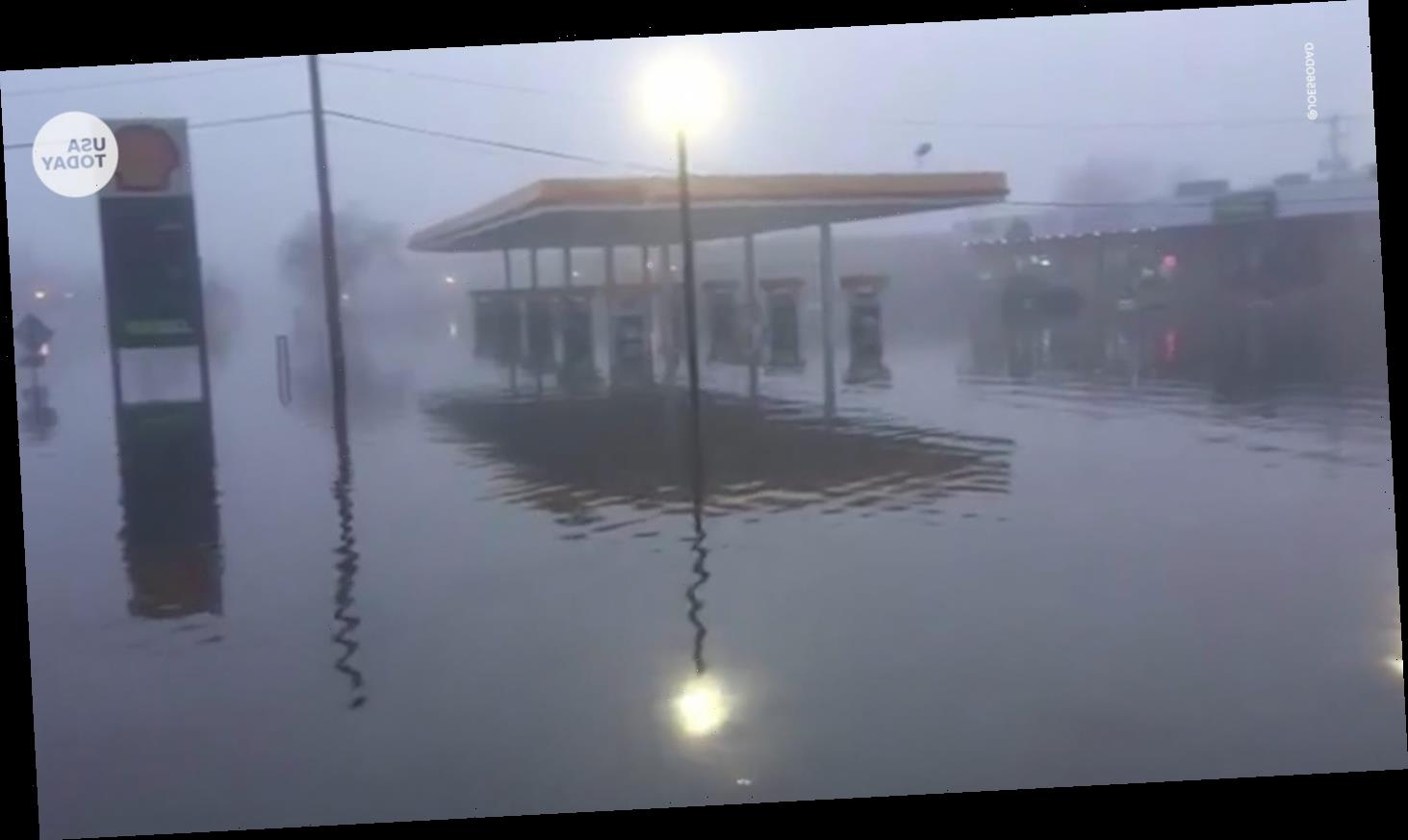It has become a freakish ritual: Each January, NASA and NOAA scientists announce that the previous year ranks among the hottest ever recorded.
This year is no exception. Not only was 2019 the Earth’s second-hottest year on record, it was the fifth consecutive year the United States experienced more than 10 disasters costing $1 billion or more.
Underneath those figures are stories of individual suffering.
In Hudson, Iowa, last March, Zach Van Stanley watched as rapidly warming snowmelt on frozen soils turned his backyard corn field into a river. The flooding from the heavy rains that followed affected more than 14 million people across the Midwest and northern Great Plains, causing more than $12.5 billion in damage to levees, bridges, roads and other infrastructure.
A four-day heat wave in July made living with disability near unbearable for Kathlean Wolf in Madison, Wisconsin. A heat dome sat over two-thirds of the United States, creating dangerous conditions for communities unaccustomed to prolonged heat — the most lethal of all natural disaster exposures.
In October, Lauren McNulty’s eyes burned and itched from the wildfire smoke rolling across San Francisco Bay. Adjacent neighborhoods plunged into darkness after her power company resorted to rolling blackouts to stop its transmission lines from sparking wildfires.
We must adapt to our new reality
This is not normal, and it’s not a “new” normal, either. It’s the end of normal, and we need new infrastructure to help us adapt. We must design bridges and roads that can withstand heavy flooding and sea level rise. We need cooling centers and public parks that will provide shelter to vulnerable people during heat waves, public transit systems designed for extreme heat, and buildings that maximize energy efficiency. And we need an electricity grid that is prepared for the new realities of wildfires in the West.
Yet our federal administration is quietly removing regulations that ensure our infrastructure can withstand increasing climate change risks. The Trump administration this month signed an executive order proposing changes to the National Environmental Policy Act, a 50-year-old landmark law that requires agencies to evaluate how new infrastructure will affect the environment. The changes include a rollback of federal flood risk management standards and dropping requirements that federal agencies consider climate change risks in infrastructure projects.
Mississippi River hits record high flooding Iowa street (Photo: USAT)
The changes will provide short-term benefits; it will be cheaper and easier to build in the floodplains of my home state of Louisiana, for example. But those projects won’t be built to last. It will cost taxpayers more in the long run when we’re forced to replace infrastructure that washes away.
Designing infrastructure without planning for the human impacts of climate change is like engineering without the consideration of gravity.
Talking it out: Learning to discuss complicated issues ahead of the election
We want to hear from you: Be a part of the solution to finding solutions. Tell us here.
There’s a better way. Instead of ignoring the risks of climate change, listen to communities — conservative and progressive, rural and urban, rich and poor — that are not only paying for federal infrastructure with their tax dollars, but also living with the legacy of that infrastructure for decades.
That’s why I founded ISeeChange in 2012. A digital platform with participants in 118 countries, ISeeChange enables people to share stories via phone or computer of how climate change is affecting them. When those stories are synced to local weather and sensor data, we co-create community climate records, with detailed, block-by-block information that has proved to be more accurate than the hypothetical models used to design multimillion dollar infrastructure projects.
Candidates on climate change:Review how the presidential contenders would address the global challenge.
In New Orleans, ISeeChange community data has informed designs to reduce stormwater flooding. We’ve quadrupled the amount of feedback and data traditionally collected in public meetings and revealed key details that modeled flooding data missed. The engineers responsible for the projects recognized that these community members were providing “need to have” insights.
Climate changes outpace response
And the need for those insights is increasing. Engineered infrastructure investments last decades, and yet risk estimates have never been more uncertain.
With each year’s weather growing more aberrant, we cannot afford to ignore climate data or community voices. It is up to us to hear each other’s stories and use them to formulate our adaptation goals, plans and designs: What can we not live without? What can we let go? When we pay attention to our changing environment, can we see how we are working with it or against it?
Each one of our experiences with climate change provides powerful tools to connect to each other, across divides and equitably plan for our future: designing more effective and climate-resilient infrastructure from the bottom up.
Julia Kumari Drapkin is CEO and founder of ISeeChange, a digital platform that mobilizes communities to share stories and microdata about climate impacts to inform and improve climate adaptation and infrastructure design. Drapkin founded ISeeChange after more than a decade as a journalist reporting natural disasters and climate change science across the globe and in her own backyard on the Gulf Coast.
You can read diverse opinions from our Board of Contributors and other writers on the Opinion front page, on Twitter @usatodayopinion and in our daily Opinion newsletter. To respond to a column, submit a comment to [email protected].
Source: Read Full Article

